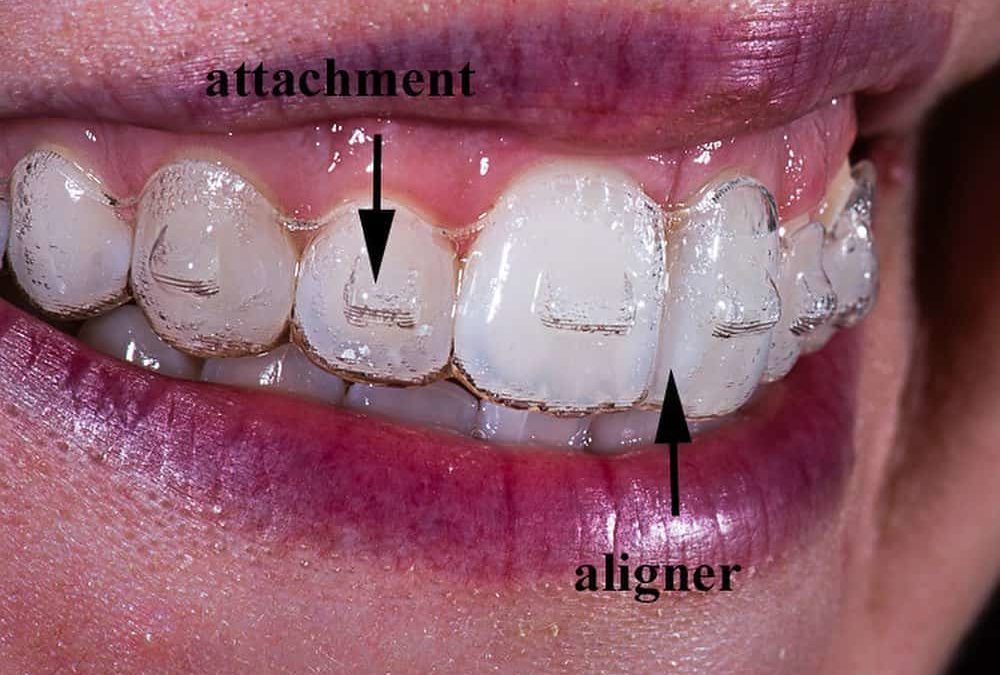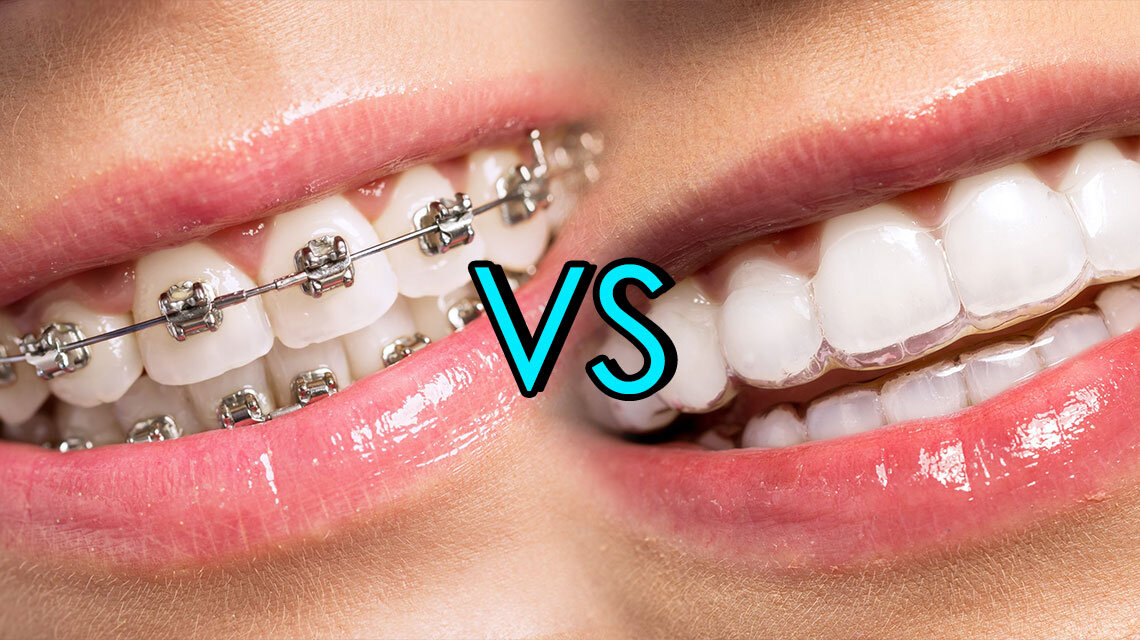What to Anticipate Throughout Your Invisalign Journey: A Comprehensive Review
Invisalign vs. Typical Braces: Which Alternative Is Right for You?
When taking into consideration orthodontic treatment, the choice in between Invisalign and typical braces provides numerous essential variables that warrant careful evaluation. Invisalign uses a very discreet option with detachable aligners, while typical dental braces provide a much more visible yet effective service for serious imbalance. Each choice incorporates distinctive benefits and disadvantages connected to appearances, convenience, therapy period, and price. Understanding these nuances is vital for making an educated choice that straightens with your individual choices and way of life. The inquiry continues to be: which choice will best meet your orthodontic needs and assumptions?
Introduction of Treatment Options

In comparison, typical braces contain metal braces and wires that are bound to the teeth. This approach applies continuous pressure over time to accomplish placement. While effective for complicated orthodontic problems, typical braces need normal brows through for adjustments and can present challenges in keeping dental hygiene due to the problem of cleansing about brackets and cords.
Both alternatives have their benefits, and the option usually rests on certain oral conditions, lifestyle preferences, and individual conformity. Inevitably, getting in touch with an orthodontic professional is important for establishing one of the most suitable treatment plan tailored to specific demands. Understanding the nuances of each option can considerably affect the general success of orthodontic treatment.
Visual Considerations
A significant variable affecting the option between Invisalign and standard braces is the aesthetic allure each therapy provides. Invisalign aligners are crafted from clear plastic, making them practically invisible when used.
On the other hand, conventional dental braces contain metal braces and cables, which can be more visible. While advancements in orthodontic modern technology have led to the growth of smaller sized braces and tinted elastics, typical braces still keep a more obvious profile. For some people, the presence of dental braces may hinder them from seeking necessary treatment.
Inevitably, the option between Invisalign and traditional braces might depend upon individual preferences regarding visual appeals. Clients that focus on discernment commonly lean towards Invisalign, while those that are less concerned about visibility may select conventional braces. Comprehending the aesthetic implications of each choice is vital for making a notified decision that lines up with one's way of living and choices.
Comfort and Convenience

In regards to comfort, Invisalign aligners are removable, enabling clients to appreciate their favorite foods without constraint and keep optimum dental health. Brushing and flossing are streamlined, as the aligners can be obtained during these routines, whereas typical dental braces call for mindful navigating around cables and brackets.
In addition, Invisalign's modern system permits fewer orthodontic check outs. Clients usually get several collections of aligners at as soon as, which can improve the treatment process and lower time spent in the orthodontist's chair. In contrast, typical braces demand routine changes, making them less hassle-free for those with hectic schedules. Invisalign. Generally, the comfort and ease of Invisalign make it an appealing selection for several people seeking orthodontic treatment.
Treatment Duration and Performance
While both Invisalign and conventional dental braces are effective in dealing with dental misalignments, the period of therapy can vary dramatically in between the two alternatives. Commonly, Invisalign treatment can take anywhere from 12 to 18 months, depending on the complexity of the situation. The clear aligners function by gradually shifting teeth right into their desired positions, and routine follow-ups with an orthodontist aid make sure development continues to be on course.
In contrast, conventional braces usually require a longer commitment, normally varying from 18 months to 3 years. This results from their fixed nature and the use of braces and cables, which can be extra reliable for extreme imbalances and complex situations (Invisalign). The treatment effectiveness of conventional braces is well-documented, as they enable specific changes and higher control over tooth activity
Inevitably, the option in between Invisalign and standard braces might pivot on both the anticipated treatment period and the certain oral issues available. Consulting with an orthodontist is critical, as they can give customized suggestions based on individual demands, ensuring the selected technique lines up with desired outcomes and durations.
Price Contrast and Insurance Policy Choices
Cost plays a significant duty in the decision-making process for individuals taking into image source consideration orthodontic therapy, whether choosing Invisalign or standard braces. Typically, the expense of Invisalign ranges from $3,000 to $8,000, while traditional dental braces normally set you back between $2,000 and $6,000. Elements affecting these expenses include the intricacy of the case, the period of treatment, and geographical place.
Insurance coverage can significantly influence out-of-pocket costs. Many oral insurance Look At This coverage plans supply partial coverage for orthodontic therapies, but the specifics can differ widely. It is crucial for individuals to review their insurance coverage to figure out the degree of insurance coverage for either choice. Usually, conventional dental braces may be much more often covered by insurance policy plans contrasted to Invisalign, which some insurance firms categorize as an aesthetic treatment.
Furthermore, numerous orthodontic techniques offer flexible layaway plan, making both therapy options much more easily accessible. People should inquire about prospective financing alternatives and price cuts for upfront payments. Assessing the overall expense, including insurance coverage benefits and payment strategies, is necessary for making a notified decision that aligns with both aesthetic preferences and budget considerations.

Final Thought
In summary, the option between Invisalign and standard dental braces rests on several aspects, including aesthetic preferences, convenience, therapy period, and price. Invisalign offers a very discreet, detachable choice that assists in dental hygiene and dietary adaptability, while traditional braces might be better for complicated dental issues and often come at a reduced rate factor. Eventually, assessment with an orthodontist is necessary to assess individual conditions and figure out the most suitable treatment option for achieving optimum dental alignment.
When taking into consideration orthodontic treatment, the choice in between Invisalign and typical dental braces provides several crucial elements that warrant cautious evaluation.Contrasting Invisalign and conventional braces discloses unique treatment choices for orthodontic adjustment.While both Invisalign and typical braces are reliable in fixing oral imbalances, the duration of therapy can vary significantly in between the two alternatives.Expense plays a Get More Info substantial function in the decision-making process for people thinking about orthodontic therapy, whether choosing for Invisalign or traditional dental braces.In recap, the option in between Invisalign and standard braces pivots on multiple variables, including visual preferences, comfort, therapy duration, and expense.